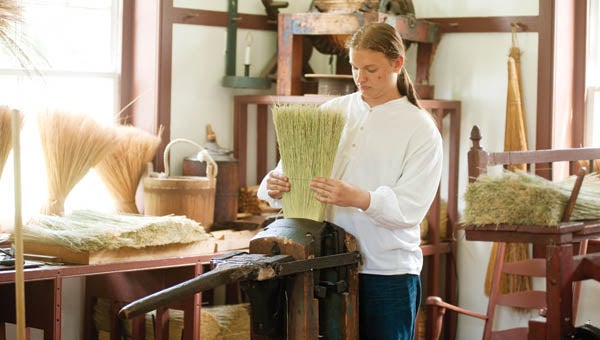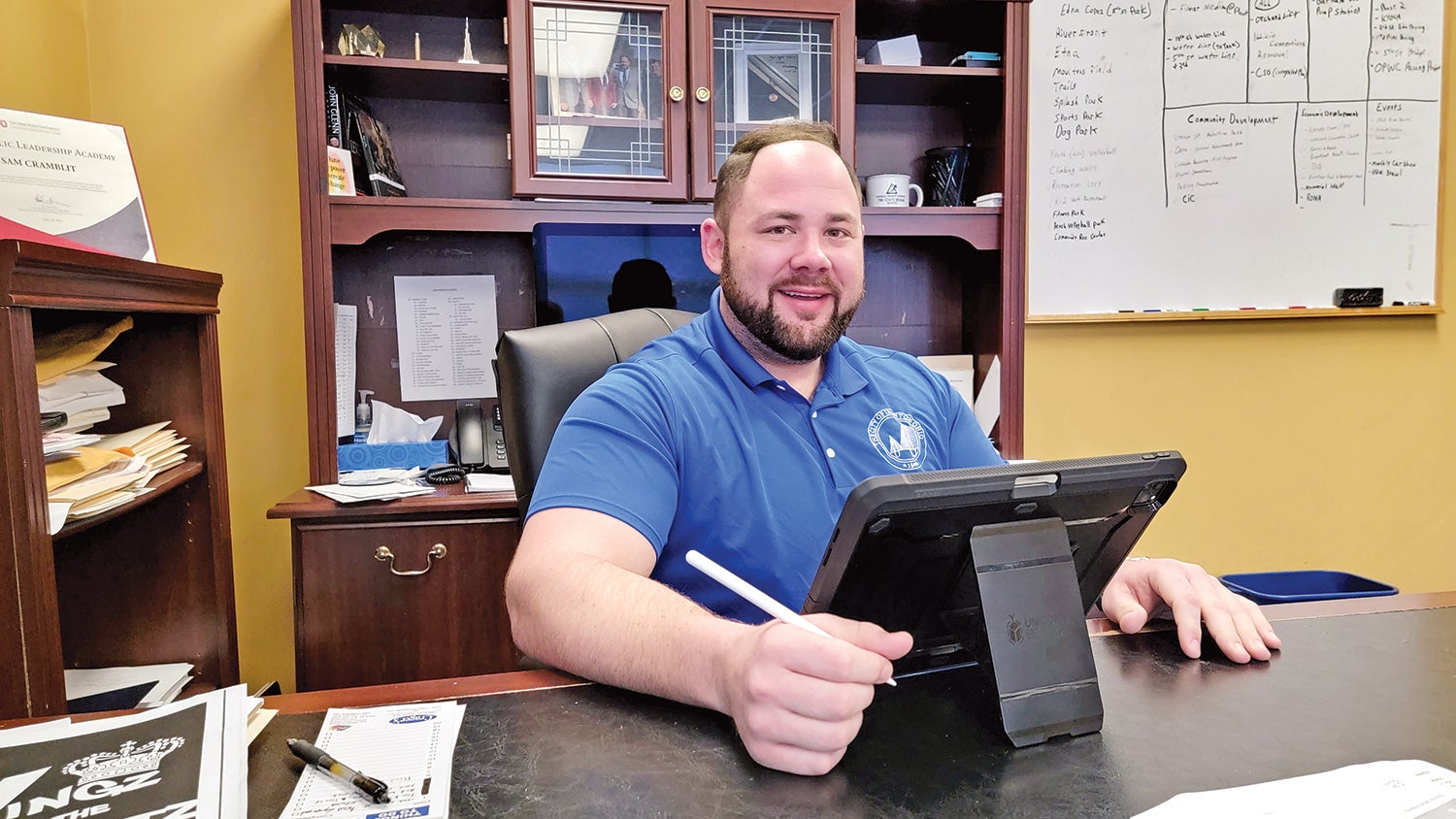A leap back in time
Published 4:17 pm Wednesday, August 15, 2012

Shaker Village of Pleasant Hill, in Harrodsburg, Ky., is the largest restored Shaker community in the United States. Photography | Jessica St. James
HARRODSBURG, Ky. — For many people, the 21st Century lifestyle is full of hustle and bustle.
Traffic jams and business appointments. Emails to answer and lines to wait in. Taking the kids to soccer practice and picking up dry cleaning.
Just outside the busy city of Lexington, Ky., remains a vestige of a time before automobiles, computers and television, where simple living was the motto of the day.
Shaker Village of Pleasant Hill, in Harrodsburg, Ky., is the largest restored Shaker community in the United States.
Although there are no living Shakers at the village, Pleasant Hill preserves their legacy and customs with a breathtaking outdoor, living-history museum.
Visitors can step back in time and watch interpreters perform a variety of daily Shaker tasks, from woodworking and broommaking to farming and singing.
Who were the Shakers?
From 1787 to the present, the total recorded membership of Shakers is more than 16,000.
Today, there are only three living and practicing Shakers. They live in the last remaining active village at Sabbathday Lake, Maine.
In 1774, a dissenting group of Quakers left England and came to America to pursue religious freedom. The group was also following a woman named Ann Lee, who had visions and heard Jesus Christ speak to her.
Mother Ann, as she would be called, was convinced the only true road to salvation was celibacy and confession of sin. She also believed the second coming of Christ would be as a woman.
Thus, the United Society of Believers in Christ’s Second Appearing was born.
The “Shaking Quakers,” and then just “Shakers,” were given the name because of their animated movement during worship.
Once in America, the group settled its first permanent village in Niskeyuna, N.Y., and continued to spread from Maine to Kentucky.
Shakers lived a peaceful existence and believed in gender equality, simplicity, celibacy and communal living.
“They are essentially operating from the prospective that they are living in Heaven on Earth,” said Pleasant Hill interpreter Aaron Genton.
In the early 1800s, a small group of people started a Shaker community in Kentucky, which they named Pleasant Hill.
During the mid-to-late-19th Century, Pleasant Hill was the third largest of 19 Shaker societies in the country. At its height, the village had about 500 residents and was about 4,500 acres in size.
There were more than 260 structures on the property, with 34 original structures remaining.
In the early 1900s, dwindling membership, changing social attitudes and the Industrial Revolution caught up with the group. By 1910 the Shaker Village of Pleasant Hill closed its doors as an active religious society.
The land, buildings and furnishings passed into private hands until historic restoration began in 1961.
Visiting Pleasant Hill
Aimee Darnell, publicist for Pleasant Hill, said visitors come to the village to learn about the history of the Shakers, but often take away more from the overall experience than expected.
“The serenity, the peacefulness and relaxation,” Darnell said. “It’s a step back in time to a simpler life. That’s the beauty of this place.”
A walk along the dirt paths will take visitors to any of the Shaker buildings for interpretations and tours of Shaker life.
The Centre Family Dwelling was the second largest building in Kentucky, behind only the first state capitol building, when it was built in 1824.
The 40-room building is open to tour and shows many examples of original Shaker furniture and artifacts.
“Shakers lived in a spiritual family,” said Genton. “Men and women saw themselves as spiritual brothers and sisters. There is no marriage in Shaker communities. They are a celibate group.”
Men and women used separate doorways, slept on opposites sides of the house and even used separate staircases. There were 14 bedrooms in the four-floor house.
Today, the Centre Family Dwelling is used as a museum. Some of the rooms reflect the actual purpose of the building, while others are used to display aspects of Shaker life that range from scribe work to furniture making to farm life and preserving foods.
Other buildings on the property show artisans at work making traditional crafts and performing trades of the day.
Women in traditional Shaker dress use looms and spindles to fashion sheep’s wool into clothing and textile items. Men work with traditional tools to create brooms, oval wooden storage boxes and other woodcrafts.
People tend the crops of the farm and care for the many sheep, goats, chickens, oxen and other animals at home in the village.
At the Meeting House, solo performances of the more than 20,000 Shaker songs and demonstrations of dances can be heard and seen.
More than a museum
“Yes, we are a living museum, but we’re so much more than just that,” Darnell said. “We have lots of recreation here on the property.”
After a tour of the Shaker buildings, a hearty meal at the Trustee’s Office Dining Room is in order.
The menu changes with the seasons using a seed-to-table philosophy. Produce from the village’s garden and local growers provide the ingredients for the homemade soups, tarts, casseroles and more.
Riverboat tours on the Kentucky River provide a serene view of the limestone Palisades and historic High Bridge from aboard the Dixie Belle.
The Nature Preserve at Shaker Village manages and protects the 3,000-acre property and offers more than 40-miles of hiking and equestrian trails.
“We’ve converted about 1,000 acres of our property to native, warm-season grasses and wildflowers,” Darnell said. “It’s the prefect place to take a book and just sit back under any of these trees.”
There are also stables which provide boarding for horses when riders are not out exploring the countryside.
The Inn at Shaker Village also offers visitors an overnight stay to ensure — they have time to experience everything the property has to offer.
The inn is comprised of 70 rooms spread throughout the village.
Some are located above the artisans’ shops. There are a few cottages, which offer accommodations for the entire family.
“The overnight experience is fantastic,” Darnell said. “It is so different. You would see this place in a whole different light once you’ve stayed the night at Shaker Village.”
All rooms are furnished with Shaker-style furniture but with modern amenities such as TempurPedic mattresses and flat-screen TVs.
The village also hosts a variety of special events throughout the year.
In the spring, parents are invited to bring their children to have “breakfast with the babies,” a buffet-style breakfast which includes introductions to baby lambs, goats and chicks, and to enjoy pony rides.
In the summer there are free concerts on the lawn of the Trustee’s Office Dining Room.
Events include antique shows and craft fairs, dessert cruises, seed-to-table suppers and secret locations on the property, Civil War reenactments, fall foliage hikes, special Christmas events and a blessing of the hounds.
The village is open 363 days a year, only closed on Christmas Eve and Day.
Regardless of whether visitors come for the peace and quiet, recreation, food or a special event, Darnell said they discover a whole new world to explore.
“A lot of people do come here for the first time for the history,” Darnell said. “And they do want to learn all about this intriguing group of people, the Shakers. And when they get here, they discover so much more.”





